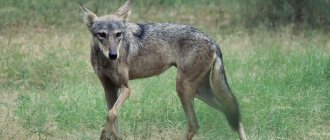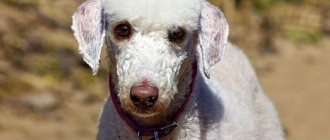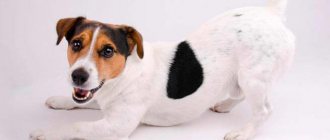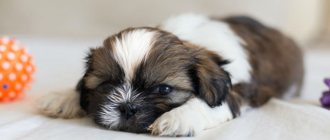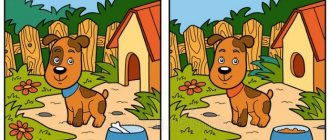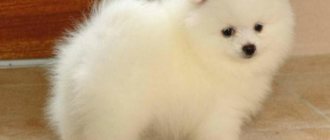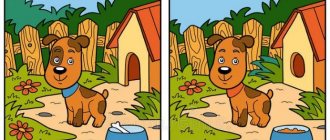Description and features
The study of ancient historical chronicles makes it possible to establish that the Maltese breed is one of the oldest. Archaeologists have found stone images of her, which they say were created in the 7th-8th century BC.
The homeland of these charming creatures is Greece, or rather one of its cities, Malta. Hence their name. According to another popular version, lapdogs come from Egypt. Be that as it may, today they are distributed throughout the world.
In the 8th century, receiving a charming white mini-dog as a gift was prestigious and honorable. It was considered to have status, so it was presented as a gift only if the person was highly respected. Many people still associate the Maltese with a comfortable, luxurious life.
One of the most famous admirers of representatives of this breed was the English Queen Victoria. The maximum peak of their breeding occurred in the 30s of the 20th century. World wars had a negative impact on the population of these dogs. In 1945, only a few lapdogs remained in the world. But after just over 20 years, their numbers increased, thanks to amateur breeders.
It cannot be said that the Maltese is a hunter or a watchman. Moreover, it is ineffective to use it for battles. However, the lack of professional orientation does not prevent her from being a good companion, friend and faithful companion for her owner. This dog is purely decorative in nature. His disposition is good-natured and flexible.
Despite their small size, lapdogs surprise with their amazing intelligence. Don't underestimate their strength and intellectual potential! They will definitely surprise the owners. Owning such dogs is worth it for people who are often at home, lead a predominantly sedentary lifestyle and simply love four-legged pets.
The Maltese is a very affectionate and friendly creature, which nature has not endowed with aggression and suspicion. However, if the dog senses danger emanating from strangers near its owner, it will certainly want to protect him. Selflessness is inherent in her.
Shampoo for Maltese
Maltese wool is the main advantage of the breed, so professional shampoos are used for care. A combination of shampoo and product containing cream and conditioner is suitable for daily care. For example, the wool line from LASER LITES makes it easier to comb and style wool.
Given the snow-white color of the Maltese, it is better to use shampoos for dogs with white hair. They wash away dirt more effectively, whiten the coat, and make its tone richer. For example, ESPREE Bright White or ESPREE Plum Perfect shampoo with a “tear-free” effect is suitable for Maltese.
It doesn’t hurt to have a spray shampoo in your arsenal to give freshness to the coat without rinsing, as well as a shampoo to prevent fleas and ticks.
Breed standard
The Maltese dog is a small indoor dog with a pleasant appearance. No operational tests were carried out to test its strength and endurance. The dog's peculiarity is its proud, beautiful posture. She has a slightly elongated back and a straight spine.
The dog's ribs should not protrude. Its sternum is quite narrow, and its neck is of medium length. The symmetrically spaced legs are equipped with strong, lean muscles and strong bones. The peculiarity of the breed is the fingers collected in a dense ball. They have soft pads.
The animal weighs from 2.5 to 4 kg. The overweight is extremely undesirable. His height is 21-26 cm. The dimensions of the Maltese are compact, it can easily be placed in a spacious bag or basket. The Maltese dog in the photo looks very elegant. She moves freely, without sudden movements, as if floating through the air.
The tail, thickened at the base, is set high. According to the standard, it should hang evenly in the center of the dog’s back, but a slight deviation to the right or left is allowed. On a medium-sized head, a flat forehead is visible. The Maltese's muzzle is slightly flattened and well defined.
In the center of it is a large dark nose. The lips are visible and have a dark tint. There is no saliva dripping from the dog's mouth because it has dry gums. Liquid in her mouth is released only when she eats. The dog's ears are small, neat, hanging down. The eyes are large, with a dark iris, reminiscent of large black buttons.
This animal has very dense fur. It is thick and delicate, reminiscent of silk to the touch. According to the standard, it should shine. The lapdog's coat should not be curly. It is important that it is straight. Now about the color of the fur.
Dark markings on a dog's body are extremely undesirable. Its fur can be pure white or beige (ivory). If a Maltese has brown or black markings on its body, it will be disqualified from the competition.
Experts highlight the following disadvantages of the breed:
- Not a scissor bite.
- Curved skull.
- Uneven nasal dorsum.
- Overweight or underweight.
- Dark wool.
- Short tail.
- Strabismus.
Character
Many people consider the lapdog an ideal pet. Few people know, but despite its pampered appearance and small size, this is a very brave creature that is not afraid of almost anything. However, like most four-legged pets, the Maltese can be frightened by loud noises, swearing by its owners, physical violence, etc.
The dog is not devoid of sociable inclinations. She accompanies her beloved owner almost everywhere. I don't tolerate loneliness well. That is why experts strongly advise against having such dogs for those who plan to be away from home for a long time.
They become attached to people very quickly, harboring the most tender and reverent feelings for them. Most often, lonely old people get such pets. Little kind dogs help them brighten up their lives and have fun.
They will be happy to accompany the owner on a walk, but not for a long one. They tend to get tired quickly, so they don’t like regular exercise. Moreover, systematic sports activities can lead to serious health problems in the animal. Be sure to keep this in mind.
Advice! If you are a lover of outdoor activities, then a lapdog is clearly not suitable for you as a companion. She gets tired quickly and needs a long rest. It is better to run at the stadium and go to nature with a Drahthaar, Labrador or Beagle.
These charming creatures love people's attention. That is why they feel comfortable at animal shows. This pet is able to feel proud when it notices the glances of interested people. It is extremely important for him to gain the respect and respect of the majority of the audience. Very photogenic, artistic and funny.
Violent expression of emotions, impulsiveness, a tendency to suspicion and aggression - this is definitely not the case with the Maltese. She is a calm, balanced dog who loves not only noisy companies, but also solitude. Prone to sudden mood swings.
If she is upset or offended by something, she will quietly retire, moving away from the irritant. But, most often, she is playful, energetic and cheerful. He loves to be the center of attention of cheerful guests, delight them with his cuteness and receive verbal approval. Without such “events,” he may withdraw into himself and sleep all day, gaining strength.
It is important for a Maltese, like any other dog, to regularly receive new emotions. We recommend taking her for a walk by the river, allowing her to independently explore objects in the immediate radius, throwing her a ball and asking her to bring it. By the way, this dog loves to play. Winning her affection is easier than it seems. It is enough to invite her to a fun game several times.
Many people call these charming dogs “intelligent.” They are moderately proud, because they know that they are beautiful and loved by everyone. Therefore, they never impose themselves and do not humiliate themselves by begging. They can be seriously offended by the lack of attention.
They are affectionate with children only if they do not offend them. Noisy children are avoided. They are not prone to conflict behavior, they strive to be friends with their owner’s other animals, but if they are aggressive, they will avoid their company.
Care and maintenance
Let us immediately note that this is a typical lap dog, which is completely unsuited to life on the street. She cannot tolerate heat or cold, just like strong wind, rain or other natural phenomena that she periodically encounters. She will watch with curiosity the changes in the weather from a strong large window, being in a cozy home.
If you walk your Maltese in winter, be sure to insulate it first. This cute little dog can catch a cold easily, keep that in mind! For insulation, you can use a classic dog overall. In the summer, representatives of the breed usually have their hair cut short. This allows them to more easily tolerate high temperatures.
We are used to seeing lap dogs neat and well-groomed, but few people think that this appearance of animals is the result of the fruitful care efforts of their owners. Your lapdog needs to be groomed daily. Hygiene is a very important thing, neglect of which can lead to health problems for your pet.
Firstly, wipe her eyes every morning to prevent souring from forming in their corners. Remove eye fluid with warm water or cooled tea leaves. Secondly, a decorative dog should be bathed frequently, at least once every 3 months. This is required to prevent parasites and to ensure that her fur does not lose its shine.
Maltese dog, reviews
You can get acquainted with the characteristics of the Maltese breed after studying reviews from dog owners. In them they often share their impressions and information useful for those who are just planning to get an animal.
Irina, 27 years old: “They gave me a Maltese puppy. From the first minute we met, this playful and cheerful dog was loved by all family members. Mary is now an adult. She follows commands perfectly, doesn’t misbehave at home, gives a lot of positive emotions and shows true devotion to her family.”
Victoria, 38 years old: “The Maltese was my dream. This snow-white and fluffy happiness appeared to me quite recently. Maltese is moderately active, cheerful, and good-natured. But she has her own special character - she gets easily offended, gets very sad if you leave her alone. In addition, caring for this breed is very expensive - premium food, grooming, expensive coat products and much more. But this dog is worth it!
Igor, 32 years old: “For the last three years, the Maltese has remained the main favorite of our family. A big plus of this breed is that the Maltese does not shed or smell. But the dog often gets sick, problems arise with leaky eyes and food allergies. And caring for the fur is sometimes exhausting - the animal needs to be combed daily, bathed often, and the fur treated with special products.”
Nutrition
The lapdog is one of the dogs that easily accepts dry fortified food. This commercial product contains a large number of microelements necessary for the animal to fully develop.
A Maltese puppy can eat dry food in the first months of life, but we recommend diversifying its diet by including: cottage cheese, herbs, fresh berries, vegetables and fruits, milk and dairy products, cereals, mashed potatoes and first courses, especially vegetable soup .
It is important that the dog does not overeat! It is better to feed him in small portions. A growing representative of the breed needs 200 grams of food per meal. An adult Maltese needs to be fed less often, but the portions for him should be larger, up to 350 grams.
If you decide to treat your pet to fish or meat, be sure to make sure that the product does not contain bones, even small ones. Lap dogs often end up at the vet due to a bone stuck in their throat or internal organs.
Make sure your dog does not eat: smoked chicken, raw pork, stew with lard, spicy pasta, Korean carrots and other unhealthy foods. Also make sure she always has access to clean water.
Reproduction and lifespan
These charming creatures serve their owner for at least 14-15 years. With good care, they can live up to 16 years. The breeder must take the issue of breeding Maltese dogs seriously. Here are some tips that will allow you to organize the mating of a dog and a bitch:
- It is better to place individuals on his territory, this will reduce the risk of the male being rejected by the female.
- Only adult dogs, at least 2 years old, are selected.
- At the time of mating, the female must have been menstruating for at least 3 days. This makes her more likely to get pregnant.
- You should not change the diet of a presumably pregnant lap dog. It is important to limit her activity so that she does not become overtired.
Be prepared to give birth to her a maximum of 73 days after mating. If you have never done this yourself before, or are afraid, it is better to trust a professional.
Maltese dog, allergies
Maltese dogs often develop allergies to food, tick bites, perfumes, household chemicals, dust and certain materials, such as plastic.
Allergies manifest themselves with symptoms such as:
- sneeze;
- labored breathing;
- hair loss;
- dermatitis;
- skin itching.
Allergies appear after the age of three. When the first symptoms appear, the Maltese should be shown to a veterinarian to determine the allergen and limit contact with it. In some cases, the animal is prescribed antihistamines, steroids and immunomodulators. Treatment can last from 3 to 6 months.
The doctor also gives advice on caring for an allergic dog to prevent a recurrence of the disease. They create a hypoallergenic diet and select suitable hair care products.
Price
The Maltese is an excellent companion and friend. An inexperienced fan of this breed has a high chance of deception. They can simply slip him a miniature white mongrel. That is why we do not recommend taking a puppy from your hands. By the way, indoor dogs, which breeders pass off as high-breed lapdogs, are sold for 5-8 thousand rubles.
We recommend purchasing such a pet from a nursery. In Russia, these institutions are located in Moscow and St. Petersburg. The price of a Maltese dog with a pedigree is 10-15 thousand rubles. Individuals with awards and titles are sold even more expensively, from 25 thousand rubles.
Nicknames of the Maltese
The Maltese receives its official name after birth. If desired, the future owner gives the pet a pet name. It is better to choose a laconic, sonorous and short nickname that the dog will clearly hear.
For a Maltese dog, the name should be beautiful, elegant and proud, just like the dog itself.
Nicknames for girls:
- Agata, Aria;
- Bonita, Bertha;
- Venus, Viola;
- Donna, Dame;
- Jasmine, Juju;
- Zlata, Zurna;
- Krona, Kitii;
- Lady, Li-li;
- Muse, Malva;
- Norma, Nura;
- Rachelle, Rumba;
- Sandra; Sparta;
- Tatra, Tessie;
- Fiji, Fairy;
- Horta, Hindi;
- Seagull, Chi-chi;
- Esmeralda, Etna.
Nicknames for boys:
- Diamond, Archie;
- Bunt, Brown;
- Winter, Wagner;
- Count, Guidon;
- Jazz, Dinar;
- Lotus, Lyon;
- Marseille, Mars;
- Nilsson, Narcissus;
- Pegasus, Donut;
- Spartacus, Sphinx;
- Fagot, Frant;
- Caesar;
- Chibis, Chuck;
- Emir, Ernest;
- Yukki, Jozef.
Education and training
Let us immediately note that most decorative dogs rarely undergo training, especially professionally, since people often get them, as they say, “for the soul.” But nature has not deprived lap dogs of intelligence, that’s for sure.
These dogs often resist following commands if they are not taught this from childhood. They often show stubbornness, and at all stages of training. It is necessary to immediately point out to your pet that there are rules that he will have to learn well. For example:
- You can’t “mischief” in the house (throw pots of flowers from window sills, climb onto tables, chew corners in rooms, etc.)
- You need to eat on a schedule.
- You cannot impose your society.
- Do not bark in vain at people passing by the owner.
- You cannot bully other pets.
The Maltese is a smart creature that learns and remembers quickly. Starting from 3 months of age, she can learn commands, for example, fetch. Remember that raising your voice to her during training is contraindicated!
If such a dog is afraid of you, then you should not count on his obedience. Rather, he will always look for opportunities to retire and avoid contact with the person he fears.
When you first brought your dog into the house, show her the litter tray. She has to pee in it. It is important to regularly change the sand in it. Do not allow other pets to use this litter box to relieve themselves. In this case, the Maltese will sense competition and begin to mark the territory.
This animal is incredibly playful. It loves to move wildly and have fun. Use this for disciplinary purposes. Play loud, cheerful music, then lift the dog by the front of the body and say: “Dance!” Use cheese or bread as rewards. Simply lift the treat up so that your dog can't reach it, but can sniff it, and repeat the command.
Possible diseases and methods of treating them
Unfortunately, due to improper feeding, Maltese dogs often get sick. They may suffer from pancreatitis or gastritis. Prevention of the occurrence of such diseases in animals is feeding with dry food. Don't experiment with his diet!
It is also extremely important to ensure that the foods you give your pet do not contain cartilage or small bones. The dog will not chew them into mush. A foreign body can easily get stuck in his gum, throat or even rectum.
If the damage is small and the bone is stuck shallow, the veterinarian will remove it with tweezers, but if the X-ray results show that it is in the intestines or stomach, then surgery is necessary.
Maltese dogs are also prone to eye diseases. A cloudy lens is a clear symptom of cataracts. In this case, veterinary assistance is also indispensable. Be sure to make sure that your dog does not overheat in the sun in summer and does not freeze in the cold in winter. If you notice that she isn't eating well, going outside less, or sleeping a lot, she's probably not feeling well. Take her to a specialist.
Maltese dog's eyes are running, why?
Maltese dogs may experience tear duct blockage. This leads to the accumulation of tears near the eyes and the development of bacteria. This happens for several reasons:
- Presence of mites in the ear canals.
- Ears overgrown with fur.
- Dental problems.
- Unsuitable food for the animal.
- Household allergens.
- Genetic predisposition.
Daily eye care, proper nutrition, and ear mite prevention can help prevent tearing in Maltese dogs.
